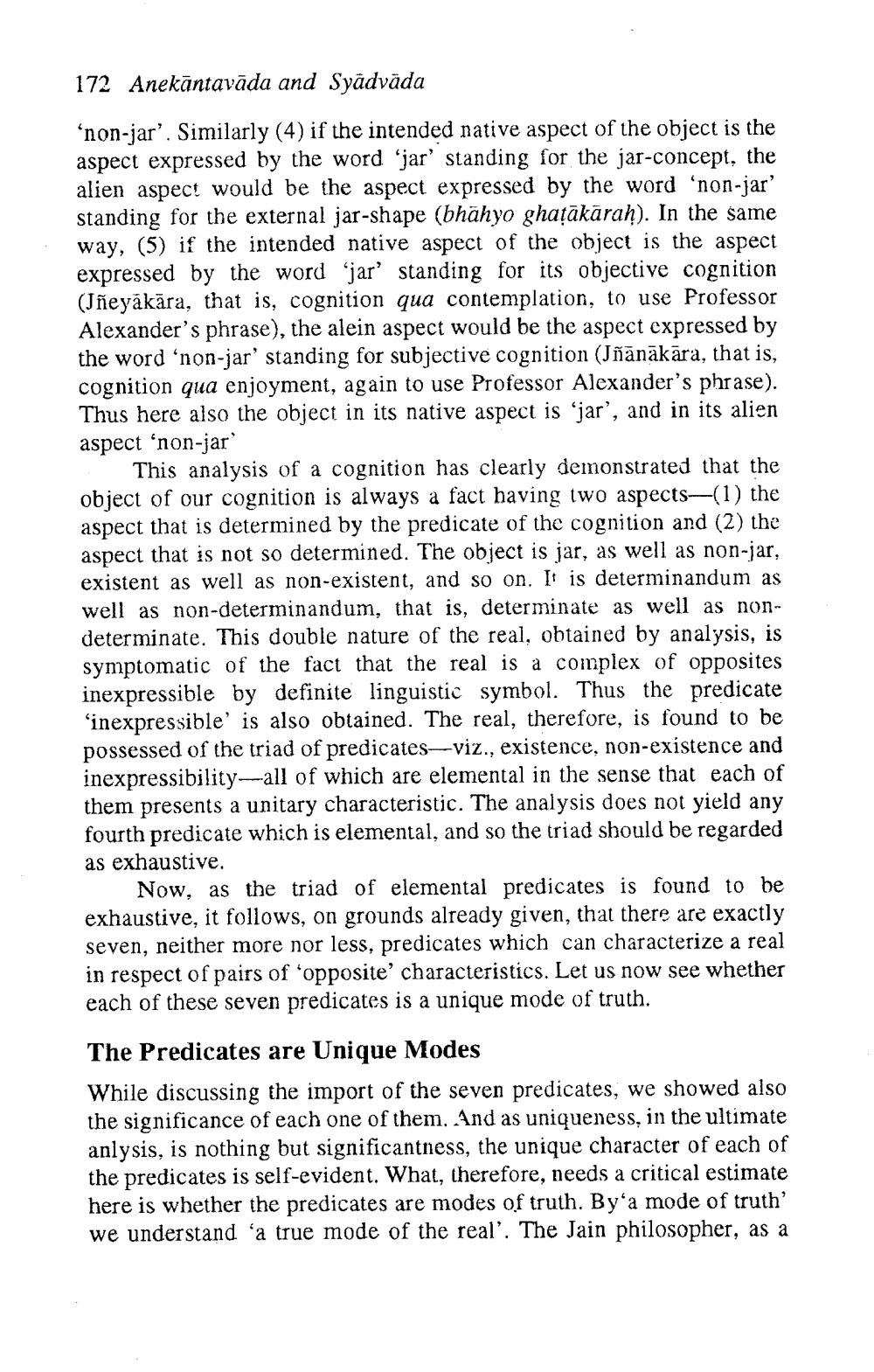________________
172 Anekāntavāda and Syâdvāda
‘non-jar'. Similarly (4) if the intended native aspect of the object is the aspect expressed by the word “jar' standing for the jar-concept, the alien aspect would be the aspect expressed by the word 'non-jar' standing for the external jar-shape (bhähyo ghațākāraḥ). In the same way, (5) if the intended native aspect of the object is the aspect expressed by the word “jar' standing for its objective cognition (Jñeyākära, that is, cognition qua contemplation, to use Professor Alexander's phrase), the alein aspect would be the aspect expressed by the word 'non-jar' standing for subjective cognition (Jñānākāra, that is, cognition qua enjoyment, again to use Professor Alexander's phrase). Thus here also the object in its native aspect is “jar', and in its alien aspect ‘non-jar
This analysis of a cognition has clearly demonstrated that the object of our cognition is always a fact having two aspects—(1) the aspect that is determined by the predicate of the cognition and (2) the aspect that is not so determined. The object is jar, as well as non-jar, existent as well as non-existent, and so on. It is determinandum as well as non-determinandum, that is, determinate as well as nondeterminate. This double nature of the real, obtained by analysis, is symptomatic of the fact that the real is a complex of opposites inexpressible by definite linguistic symbol. Thus the predicate 'inexpressible' is also obtained. The real, therefore, is found to be possessed of the triad of predicates- viz., existence, non-existence and inexpressibility--all of which are elemental in the sense that each of them presents a unitary characteristic. The analysis does not yield any fourth predicate which is elemental, and so the triad should be regarded as exhaustive.
Now, as the triad of elemental predicates is found to be exhaustive, it follows, on grounds already given, that there are exactly seven, neither more nor less, predicates which can characterize a real in respect of pairs of 'opposite characteristics. Let us now see whether each of these seven predicates is a unique mode of truth.
The Predicates are Unique Modes While discussing the import of the seven predicates, we showed also the significance of each one of them. And as uniqueness, in the ultimate anlysis, is nothing but significantness, the unique character of each of the predicates is self-evident. What, therefore, needs a critical estimate here is whether the predicates are modes of truth. Byʻa mode of truth' we understand a true mode of the real'. The Jain philosopher, as a




